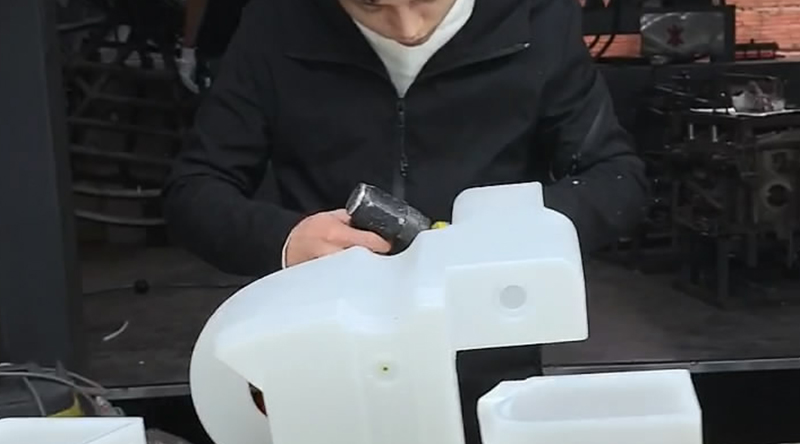What are the Criteria Used to Inspect the Appearance of Rotomolded Products?
 Feb 15,2024
Feb 15,2024

What are the Criteria Used to Inspect the Appearance of Rotomolded Products?
Rotational molding is a plastic manufacturing process used to create large, hollow, and complex parts with uniform wall thickness, such as the plastic toolbox storage case, plastic speaker enclosures, remote control lifebuoy, water tank, furniture. The appearance of rotomolded products significantly impacts their aesthetics and functionality. Therefore, it is crucial to inspect the appearance rigorously to ensure they meet the desired specifications and customer expectations. Below are the guidelines on the methods and criteria used to inspect the appearance of rotomolded products.

1. Visual Inspection
Visual inspection is the most basic and effective method for inspecting the appearance of rotational molding products. Inspectors examine the product's surface for any visible defects, such as cracks, dents, or blemishes. They also check the product's color, texture, and finish to ensure they meet the specified requirements. Visual inspection is typically performed manually, and any discrepancies or imperfections are documented and addressed.
2. Surface Roughness Testing
Surface roughness testing evaluates the texture and smoothness of the product's surface. This is typically done using a surface roughness tester, which measures the surface's profile and provides a numerical value representing the surface roughness. Surface roughness testing helps ensure that the product meets the specified surface quality requirements.
3. Color Testing
Color testing is essential for products that have specific color requirements. This can be done using a colorimeter or spectrophotometer, which measures the color of the product's surface and compares it to the specified color standards. Color testing helps ensure that the product's color meets the desired specifications.
4. UV Testing
For products that are exposed to UV light, UV testing is essential to assess the material's resistance to ultraviolet radiation. This test helps ensure that the product will maintain its structural integrity and appearance over time when exposed to sunlight.
5. Final Inspection and Testing
Before shipping the product to the customer, a final inspection and testing should be conducted. This includes a thorough visual examination, dimensional inspection, material testing, surface roughness testing, color testing, and any other specific tests relevant to the product's application. Any non-conforming products should be identified, documented, and either reworked or rejected.
In conclusion, inspecting the appearance of rotational molding products involves various methods and criteria, including visual inspection, surface roughness testing, color testing, and UV testing. These inspections help ensure that the products meet the desired specifications and customer expectations, providing high-quality rotomolded parts for various applications. Light Venus is an experienced custom rotational molding factory that that specializes in the production diverse rotomolded products. Our inspection team are trained regularly to keep continuous improvement and maintain high-quality standards to meet customer exact expectations. For a complete view of our capabilities and custom rotational molding service, please browse our factory and contact us if you need any assistance for your projects.
 Tel: 0086-13632687993
Tel: 0086-13632687993  Email: roto@lightvenus.com
Email: roto@lightvenus.com

 Home
Home Types of Rotational Molding Machines
Types of Rotational Molding Machines  You May Also Like
You May Also Like



 Tel
Tel
 Email
Email
 Address
Address








